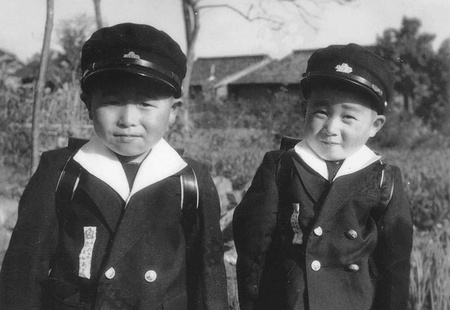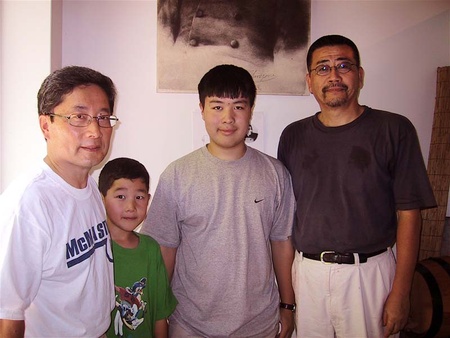>> Part 1 of interview with Ken Noma
What does being Nikkei mean to you? How do you envision our connection with Japan?
As Nikkei we are all “Birds of Passage” and each of us struggle to adapt and integrate as a minority within a predominant culture which has yet to embrace the practice of equity for all peoples. Equality without equity is simply the present status quo. I sincerely believe that once you leave your ancestral country, you are a Nikkeijin. The ease in which one adapts to a new country is dependent on your age. The younger you are, the easier it is to fit into the mainstream culture. For adults the transition is more difficult and some are never able to adjust to both cultures. To some extent, newly arrived immigrants are culturally frozen in time and after a few years upon their return to Japan on a visit, they find that the Japan that they left is no longer to be found. The Japan of my youth is only a memory and my connection to her is at the spiritual level through Buddhism, Shintoism, and the traditional arts, culture, and history of Japan. As the national organization, our focus is on Canada and issues which affect our community in this country and I do not envision a direct connection to our ancestral country.

Ken Noma (on the right) and his cousin, Toshiaki Noma in his kindergarten uniforms on the first day of classes (Photo courtesy of Ken Noma)
How would you assess the state of the national Nikkei community at the moment? Is enough being done to attract young Nikkei? Ijusha?
I have to tell you that all NAJC chapter organizations are TOTALLY committed to providing varied programmes in order to maintain their current membership and to attract youth. The Canadian Government, during the war, intended to destroy the Japanese Canadian community and thereby adopted the policy of forced “repatriation” to Japan or to eastern Canada. This diaspora has had a major impact on our community today as it has hastened the assimilation process. Even though we are a small community, we have integrated successfully into the Canadian society as the last census results indicate. Traditional Japanese culture is not part of the everyday experience of our youth, nor of the Ijusha children, so we need to engage them through mainstream activities such as sports, current cultural trends that focus on Asian culture such as martial arts, anime, foods, and others. I am concerned that there are some Japanese Canadian institutions that are focused entirely on Japanese culture at the expense of Nikkei culture and history.
What are your immediate priorities? What do you need from the community to see these through?
In the last issue of “Nikkei Voice,” I outlined some of my priorities as President so I will not restate them here. Instead let me mention that the NAJC will be upgrading our website which was identified as a priority by the majority of chapter delegates at last year’s AGM. The newly formed Heritage Committee will be undertaking “Digital Storytelling” (DST) projects under the leadership of David Tanaka of Lethbridge (Alberta) and Mike Murakami of Toronto. The Alberta chapters have taken the lead in this area and it is hoped that some of their stories will be posted on our revised website.
Do you have any Nikkei heroes? What have you learned from them?
Certainly we have national Nikkei heroes who we all admire but the struggle for Redress was achieved by a small handful of unsung Nikkei volunteers across Canada who devoted long hours, took part in peaceful demonstrations and participated in heated debates—they are my heroes. We all learned that the struggle for Redress was as important as the attainment.
Do you have any personal mottos?
In 1975, I returned to Kagoshima for the first time and reconnected with family and friends. As I was saying my farewell to my maternal grandmother, her last words were, “Yoi ningen ni natte kure” (Grow up to be a good person). I have tried to apply my grandmother’s last request in my involvement with the Nikkei community.
Finally, what are your expectations of individual members of the national Nikkei community? How do you see us all working better together?
We all face our own life challenges so I do not come with a set of expectations of the Nikkei community. I ask that as you raise your children you heed the words of advice in the song by Crosby, Stills, Nash and Young to “teach your children well.” Teach them about the 134 year history of Japanese Canadians, of their ancestral home of Japan and raise them to confident in their racial and ethnic background. Preserve your family history and keep safe the family artifacts. Lastly, encourage them to volunteer and be of service to the community.

Ken Noma (foreground), Christopher, and Michael with Mr. Saigo Takafumi. Saigo-san is the head of the Saigo family and the great-grandson of Saigo Takamori. (Photo courtesy of Ken Noma)
© 2011 Norm Ibuki





